Abstract
1 Total lung resistance (RL) and dynamic lung compliance (Cdyn) were measured in dogs anaesthetized with pentobarbitone or chloralose and subjected to aerosols of histamine during 4 successive inspirations.
2 Histamine caused concentration-dependent increases in RL and decreases in Cdyn. A significant vagal component was involved, but only when chloralose was employed and then only in the RL response.
3 The resting values of RL and Cdyn were similar regardless of which anaesthetic was used and remained essentially the same if the vagi were cooled.
4 Electrical stimulation of the efferent vagi caused large increases in RL of dogs given chloralose and these effects were attenuated by the administration of pentobarbitone. Such stimulation was relatively ineffective in dogs given pentobarbitone alone.
5 In vitro, electrical field stimulation caused contractions of dog trachealis muscle. The responses were reduced by pentobarbitone in concentrations approximating to plasma levels in the anaesthetized dogs (1 to 5 × 10-4 M), but the effects of exogenous acetylcholine were unaltered. The inhibition was dose-dependent, reversed by washing and unaltered by hexamethonium.
6 The results suggest that pentobarbitone inhibits the vagal component of histamine-induced bronchoconstriction in the dog by an action on the efferent pathway. Furthermore, pentobarbitone acts either by blocking transmission along postganglionic parasympathetic nerves or by preventing the release of acetylcholine from the nerve endings in the lung.
Full text
PDF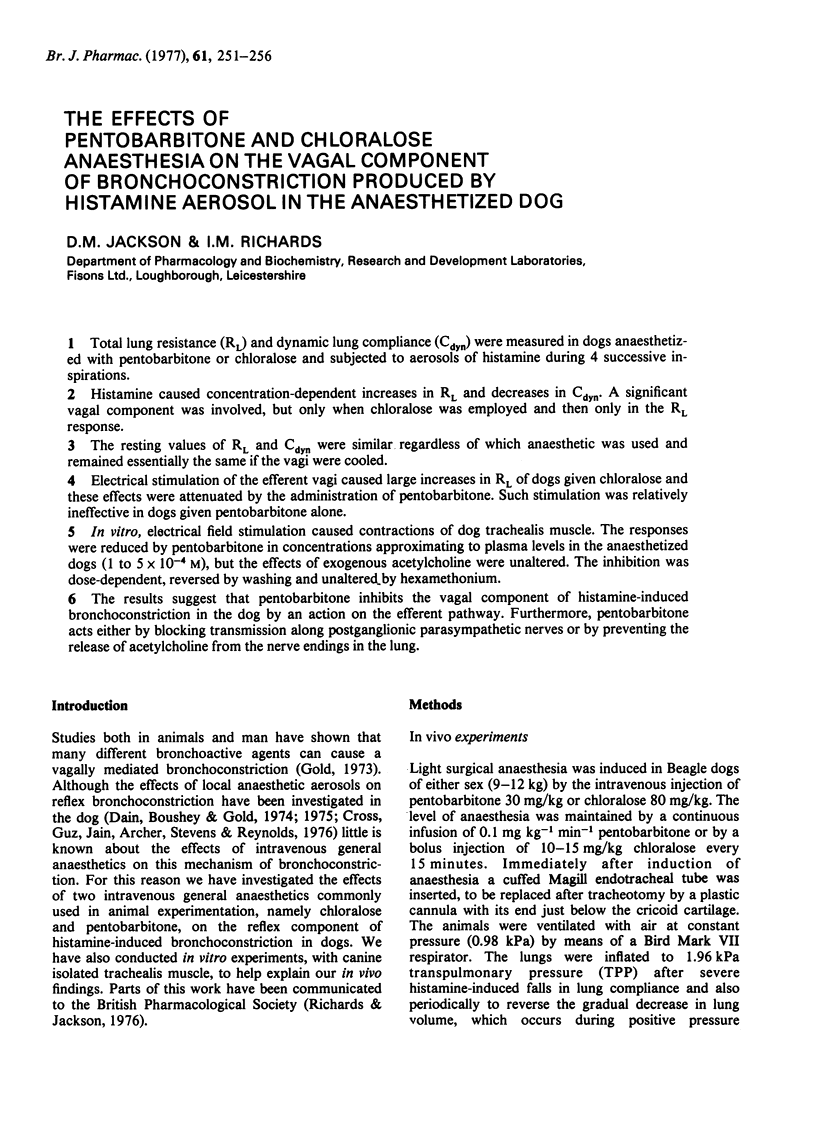
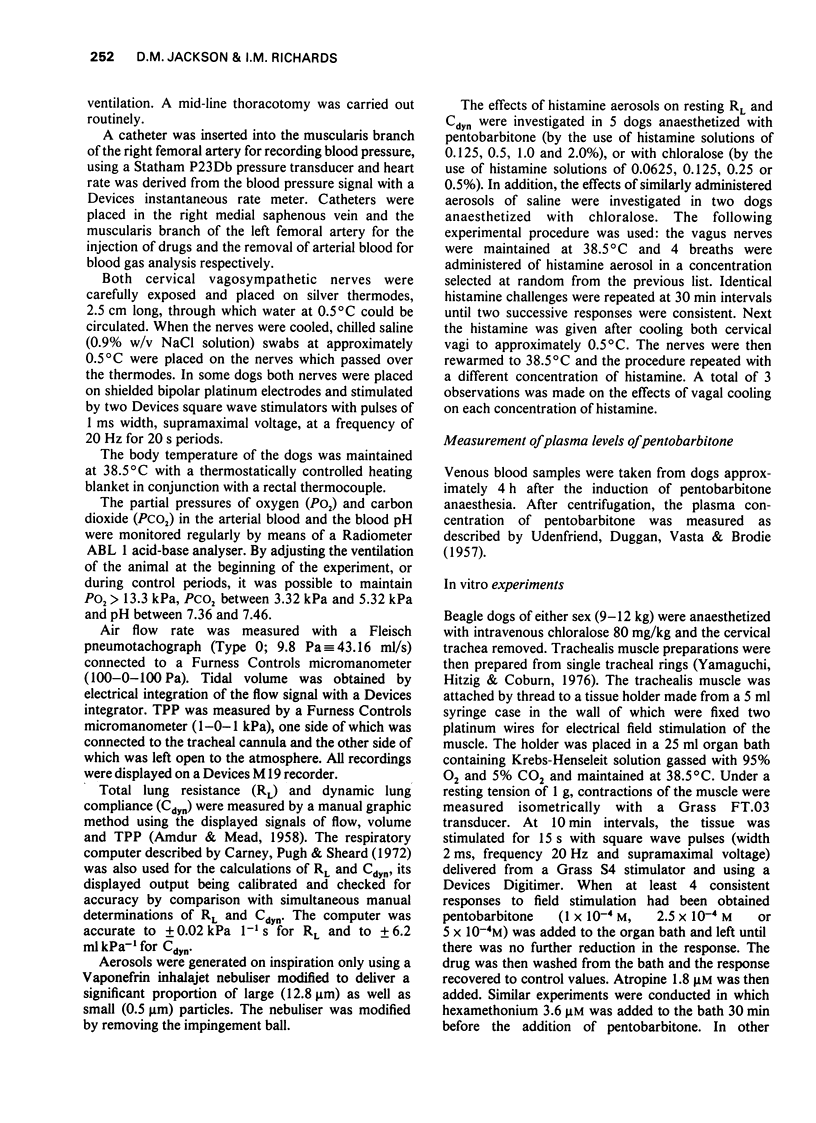
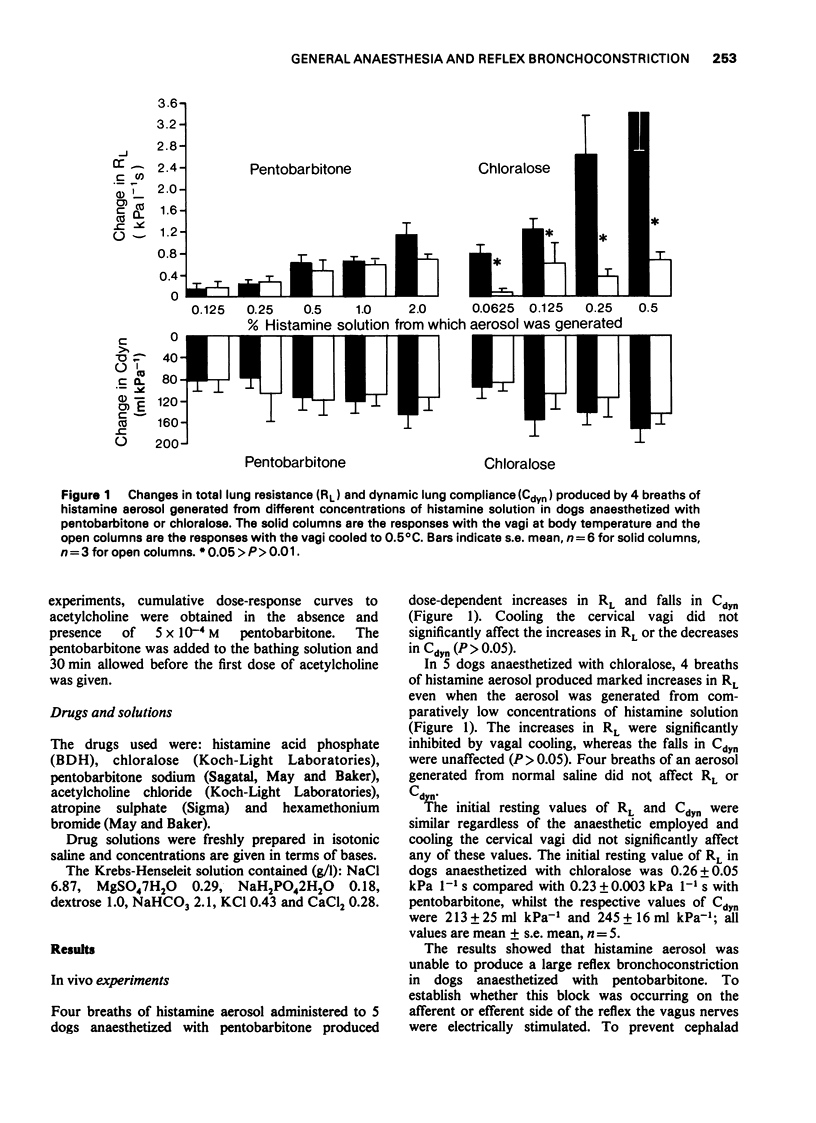
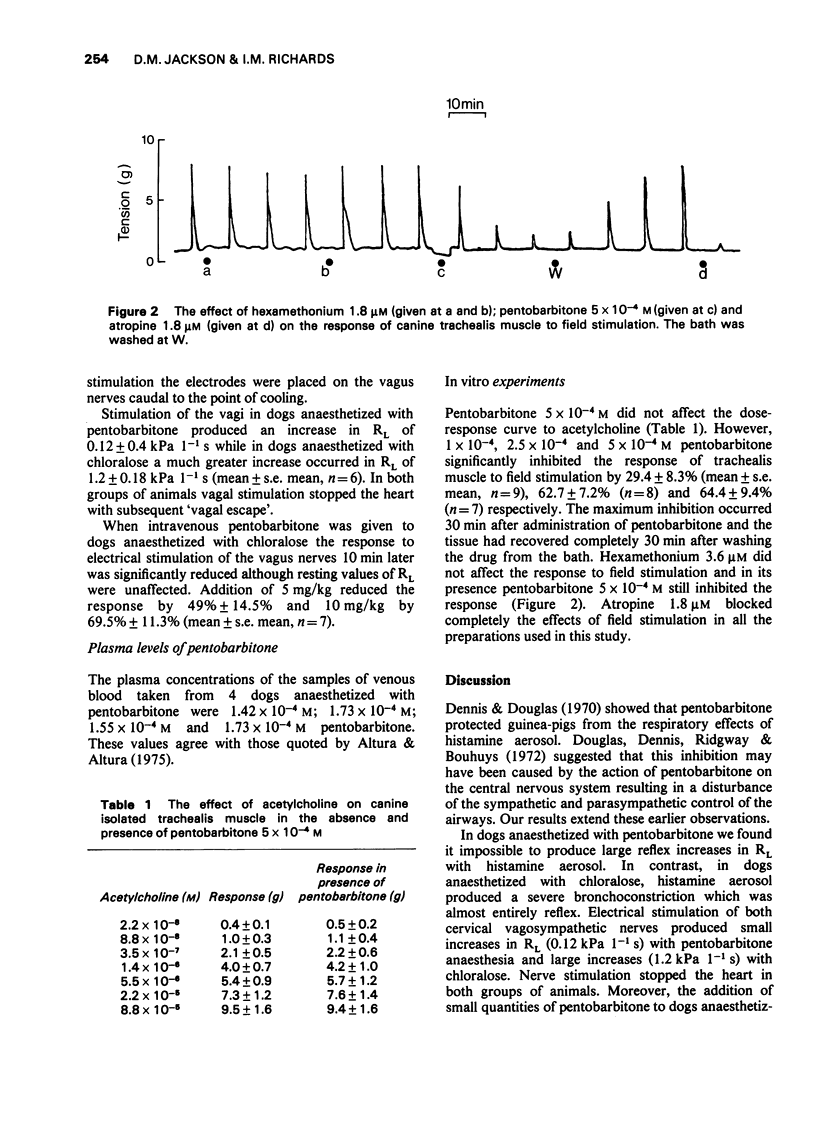
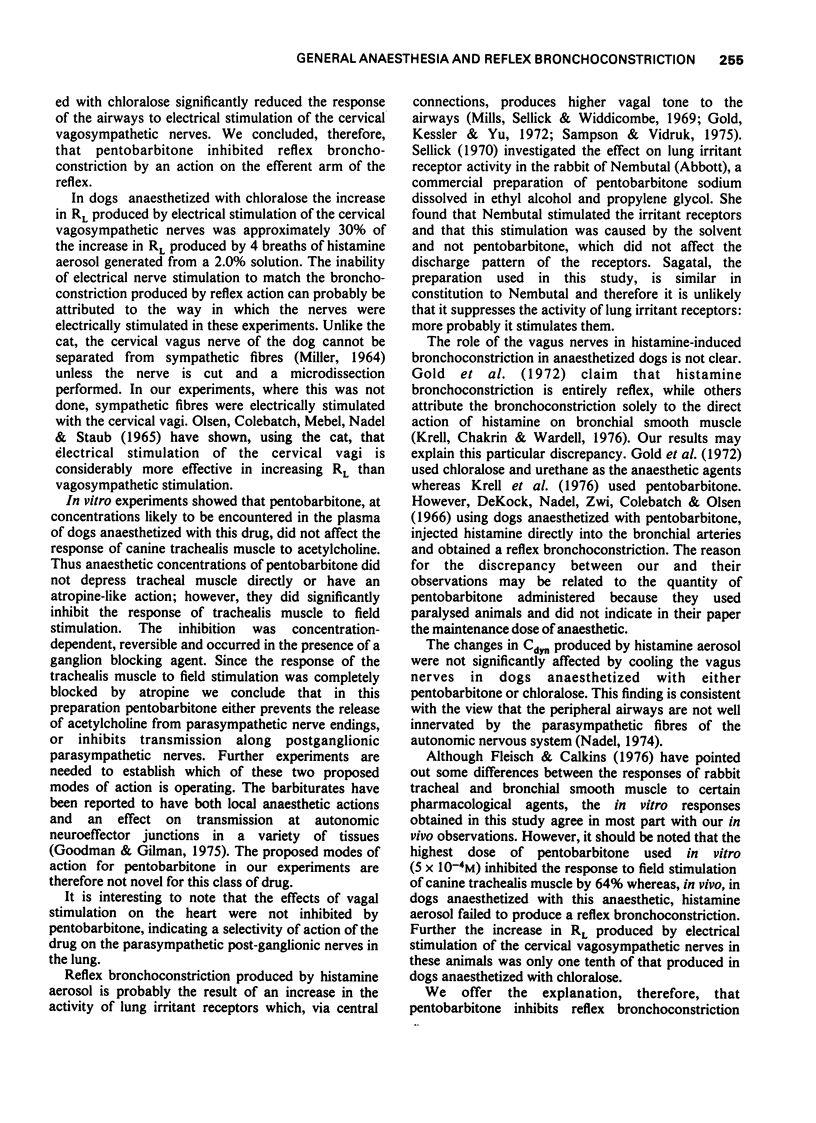
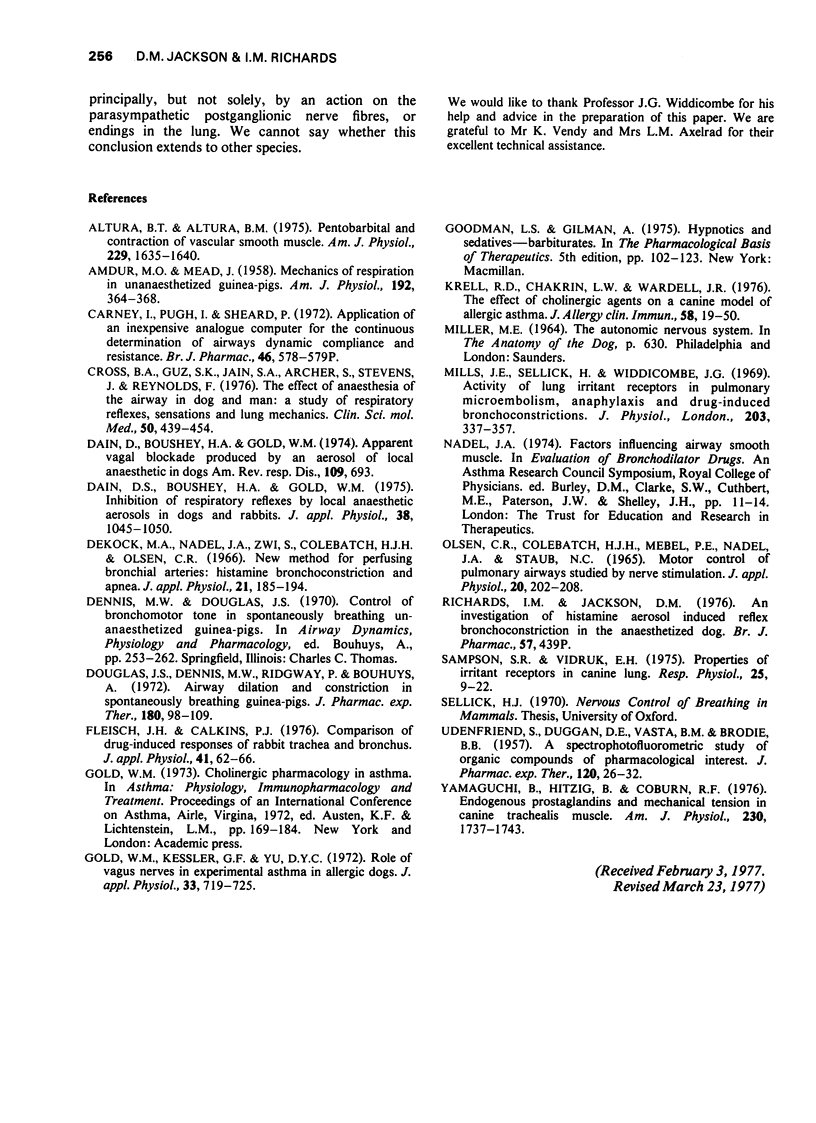
Selected References
These references are in PubMed. This may not be the complete list of references from this article.
- AMDUR M. O., MEAD J. Mechanics of respiration in unanesthetized guinea pigs. Am J Physiol. 1958 Feb;192(2):364–368. doi: 10.1152/ajplegacy.1958.192.2.364. [DOI] [PubMed] [Google Scholar]
- Altura B. T., Altura B. M. Pentobarbital and contraction of vascular smooth muscle. Am J Physiol. 1975 Dec;229(6):1635–1640. doi: 10.1152/ajplegacy.1975.229.6.1635. [DOI] [PubMed] [Google Scholar]
- Carney I., Pugh I., Sheard P. Application of an inexpensive analogue computer for the continuous determination of airways dynamic compliance and resistance. Br J Pharmacol. 1972 Nov;46(3):578P–579P. [PMC free article] [PubMed] [Google Scholar]
- Cross B. A., Guz A., Jain S. K., Archer S., Stevens J., Reynolds F. The effect of anaesthesia of the airway in dog and man: a study of respiratory reflexes, sensations and lung mechanics. Clin Sci Mol Med. 1976 Jun;50(6):439–454. doi: 10.1042/cs0500439. [DOI] [PubMed] [Google Scholar]
- Dain D. S., Boushey H. A., Gold W. M. Inhibition of respiratory reflexes by local anesthetic aerosols in dogs and rabbits. J Appl Physiol. 1975 Jun;38(6):1045–1050. doi: 10.1152/jappl.1975.38.6.1045. [DOI] [PubMed] [Google Scholar]
- DeKock M. A., Nadel J. A., Zwi S., Colebatch H. J., Olsen C. R. New method for perfusing bronchial arteries: histamine bronchoconstriction and apnea. J Appl Physiol. 1966 Jan;21(1):185–194. doi: 10.1152/jappl.1966.21.1.185. [DOI] [PubMed] [Google Scholar]
- Douglas J. S., Dennis M. W., Ridgway P., Bouhuys A. Airway dilatation and constriction in spontaneously breathing guinea pigs. J Pharmacol Exp Ther. 1972 Jan;180(1):98–109. [PubMed] [Google Scholar]
- Fleisch J. H., Calkins P. J. Comparison of drug-induced responses of rabbit trachea and bronchus. J Appl Physiol. 1976 Jul;41(1):62–66. doi: 10.1152/jappl.1976.41.1.62. [DOI] [PubMed] [Google Scholar]
- Gold W. M., Kessler G. F., Yu D. Y. Role of vagus nerves in experimental asthma in allergic dogs. J Appl Physiol. 1972 Dec;33(6):719–725. doi: 10.1152/jappl.1972.33.6.719. [DOI] [PubMed] [Google Scholar]
- Krell R. D., Chakrin L. W., Wardell J. R., Jr The effect of cholinergic agents on a canine model of allergic asthma. J Allergy Clin Immunol. 1976 Jul;58(1 Pt 1):19–30. doi: 10.1016/0091-6749(76)90103-2. [DOI] [PubMed] [Google Scholar]
- Mills J. E., Sellick H., Widdicombe J. G. Activity of lung irritant receptors in pulmonary microembolism, anaphylaxis and drug-induced bronchoconstrictions. J Physiol. 1969 Aug;203(2):337–357. doi: 10.1113/jphysiol.1969.sp008867. [DOI] [PMC free article] [PubMed] [Google Scholar]
- Richards I. M., Jackson D. M. An investigation of histamine aerosol induced reflex bronchoconstriction in the anaesthetized dog [proceedings]. Br J Pharmacol. 1976 Jul;57(3):439P–440P. [PMC free article] [PubMed] [Google Scholar]
- Sampson S. R., Vidruk E. H. Properties of 'irritant' receptors in canine lung. Respir Physiol. 1975 Oct;25(1):9–22. doi: 10.1016/0034-5687(75)90047-x. [DOI] [PubMed] [Google Scholar]
- UDENFRIEND S., DUGGAN D. E., VASTA B. M., BRODIE B. B. A spectrophotofluorometric study of organic compounds of pharmacological interest. J Pharmacol Exp Ther. 1957 May;120(1):26–32. [PubMed] [Google Scholar]
- Yamaguchi T., Hitzig B., Coburn R. F. Endogenous prostaglandins and mechanical tension in canine trachealis muscle. Am J Physiol. 1976 Jun;230(6):1737–1743. doi: 10.1152/ajplegacy.1976.230.6.1737. [DOI] [PubMed] [Google Scholar]


